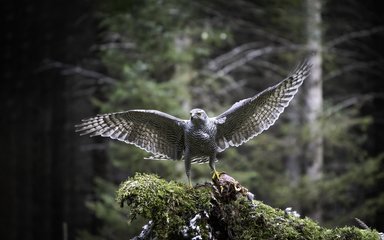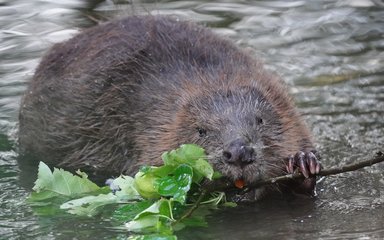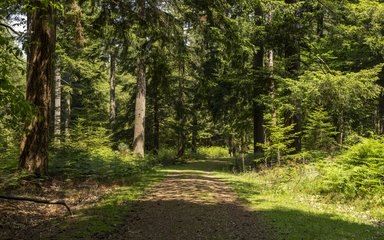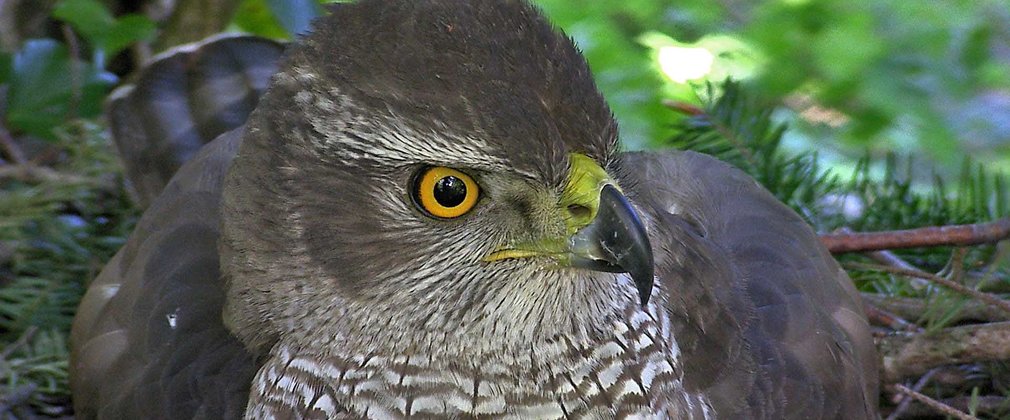
The goshawk (Accipiter gentilis) is one of our most elusive birds of prey, reflected in its nickname ‘phantom of the forest’. Driven close to extinction by habitat loss and persecution, in recent decades these magnificent birds have returned to several of our forests, including Kielder, Dalby and the Forest of Dean.
The New Forest has become a stronghold for goshawks. First returning in 2002, after closely monitoring the birds and encouraging them to thrive there are now at least 45 pairs in the region.
Goshawk statistics
- length: 42-68cm
- wingspan: 135-165cm
- weight: males 600g-1.1kg and females 900g-2kg
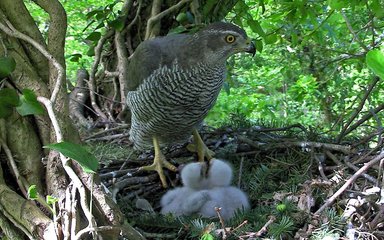
Goshawk habitat, breeding and development
Goshawks build their nests high up in tall trees, often near large areas of woodland and forests and close to open countryside for hunting. They can be absent from their nests for long periods of time when hunting.
Female goshawks lay between two and four eggs, and the chicks are raised in the spring between March and June. Young goshawks become independent around three months old.
Did you know? The name goshawk comes from the Old English 'goshafoc', meaning 'goose hawk'.
Goshawk identification
The head of a goshawk is usually grey with a pale stripe across its eyes, which are bright red or orange in colour. Its body is white and patterned with pale grey horizontal bars. Their wings are broad, grey on top and paler underneath. The goshawk has long, yellow legs with sharp talons.
It can be really difficult to spot goshawks and your best chance is on a clear day in late winter or early spring, when they perform flight displays high above the trees in order to attract a mate.
